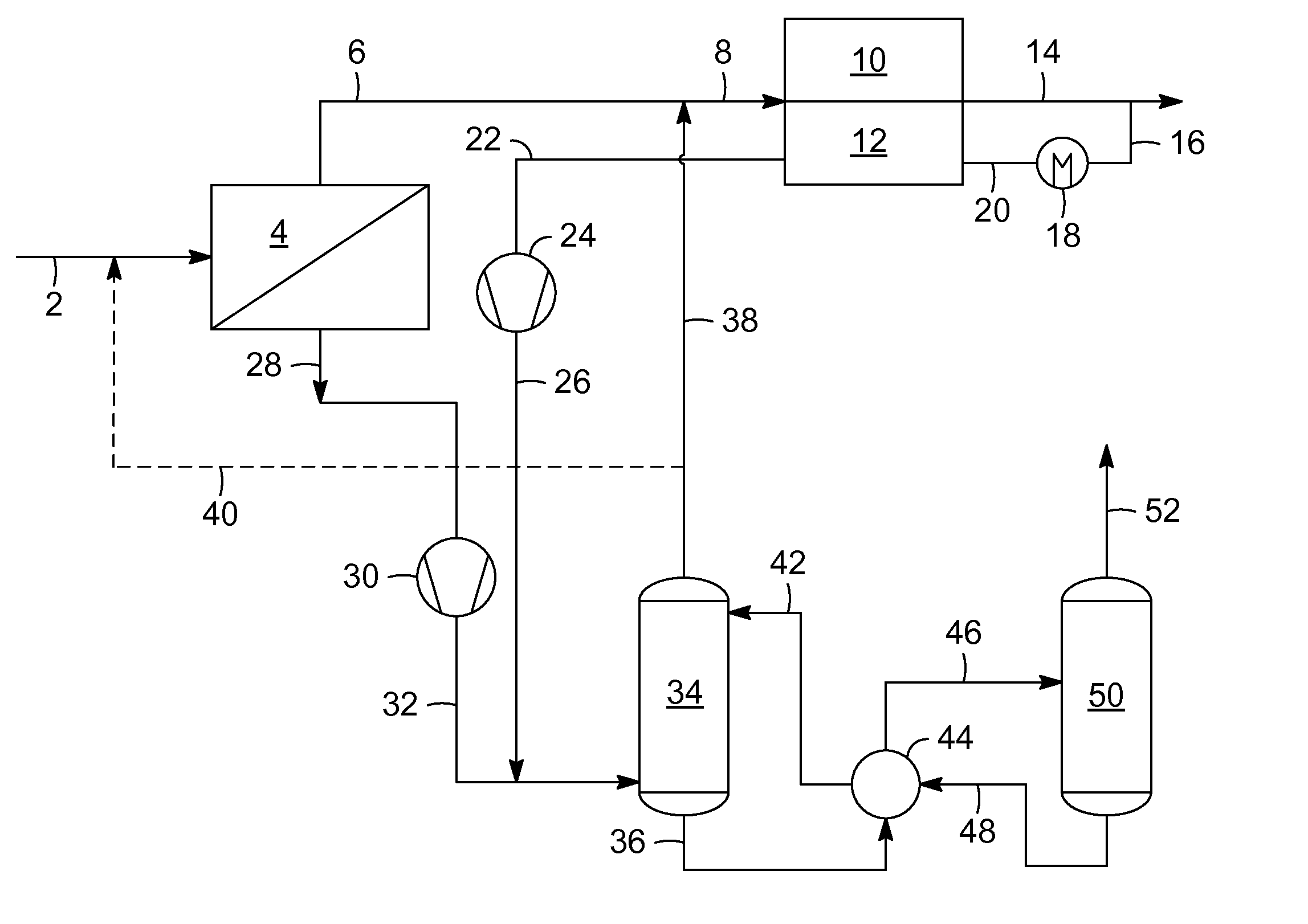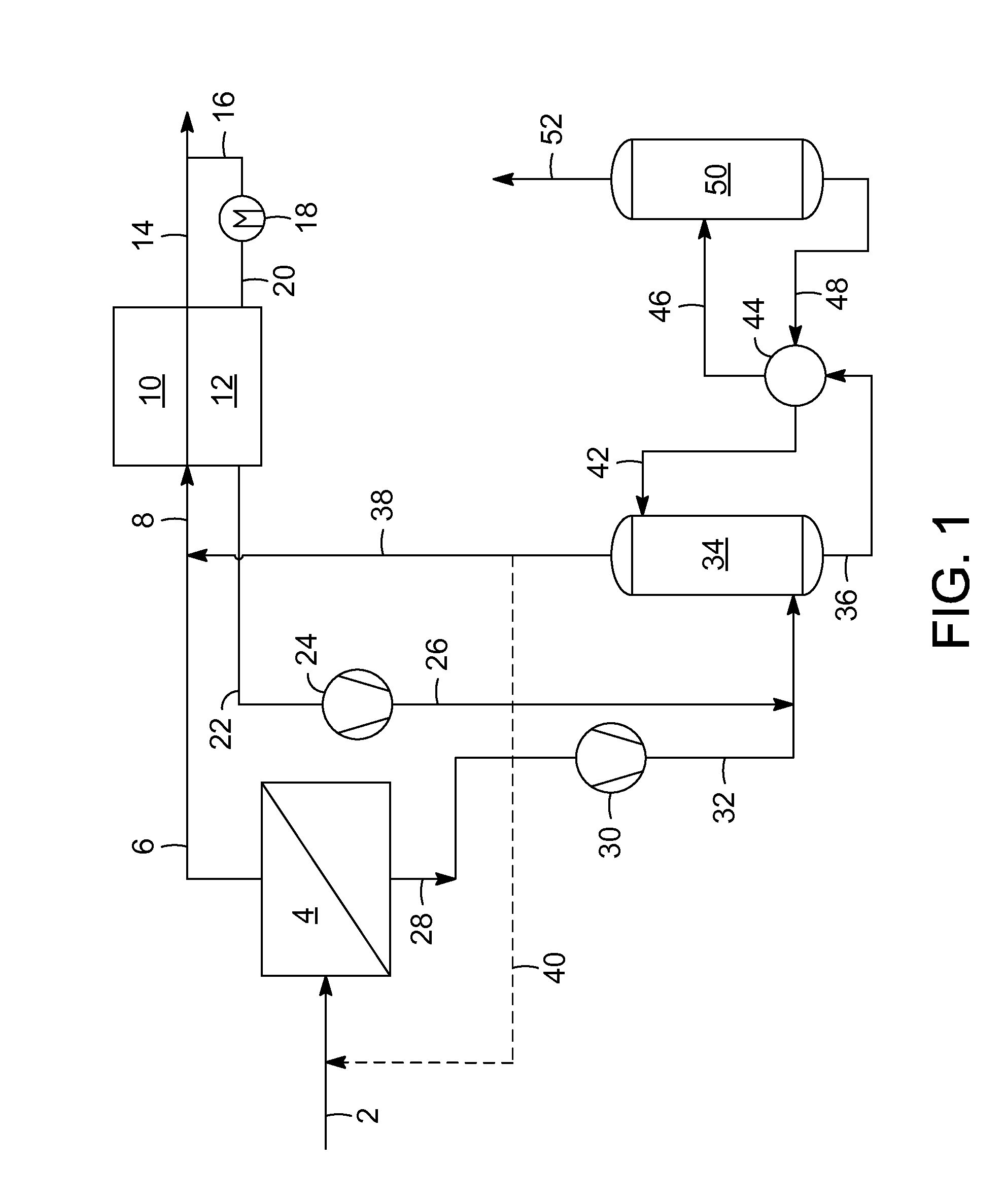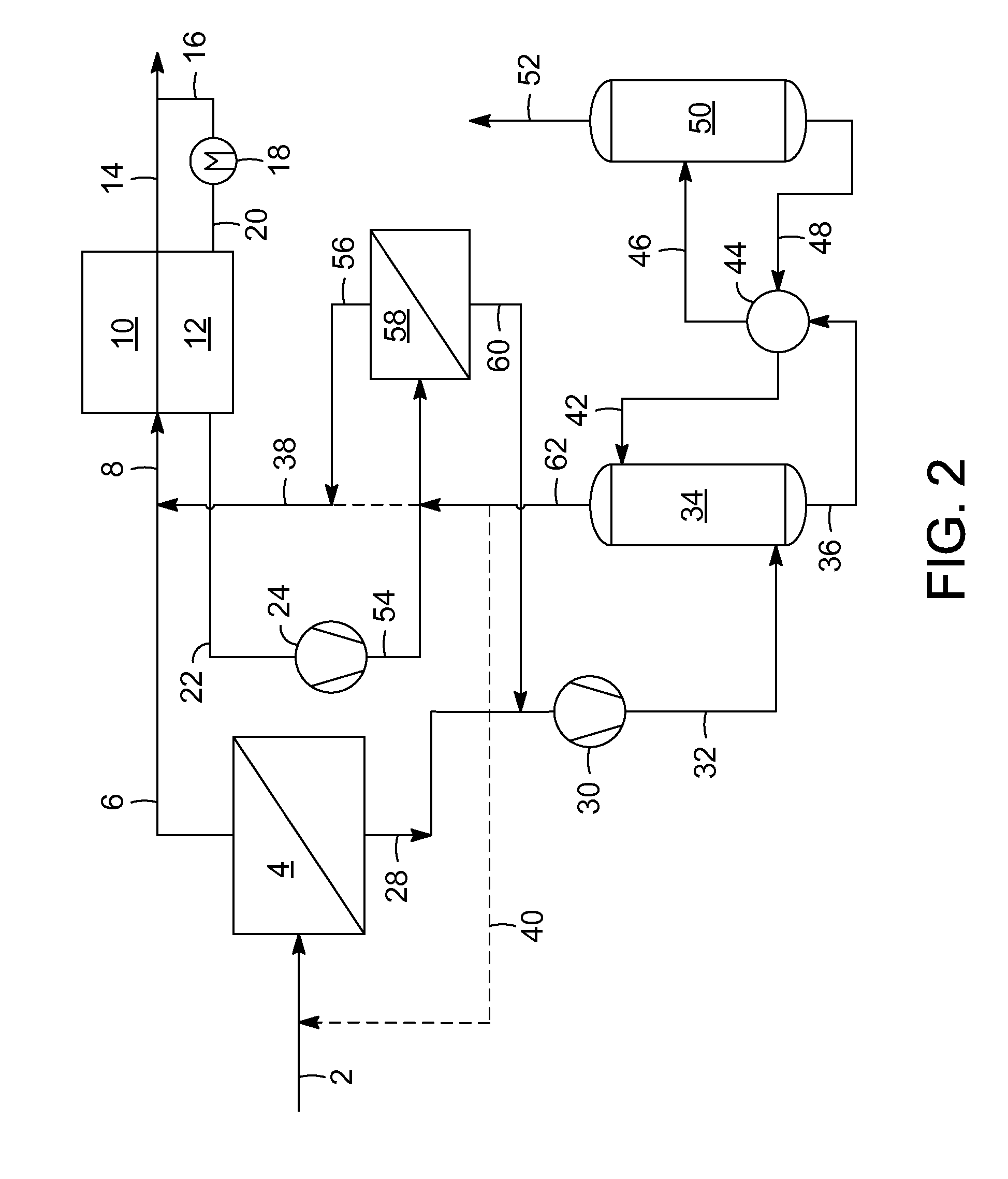Treatment of natural gas feeds
a technology of natural gas feed and treatment process, which is applied in the direction of gaseous fuels, separation processes, membranes, etc., can solve the problems of large footprint and heavy weight of amine units, low separation efficiency of amine systems, and flow mal-distribution
- Summary
- Abstract
- Description
- Claims
- Application Information
AI Technical Summary
Benefits of technology
Problems solved by technology
Method used
Image
Examples
Embodiment Construction
[0009]Ideally the treating process would be limited to the use of a combination of membranes and molecular sieve treaters to replace the amine columns that are frequently used for CO2 removal from natural gas. The motivation to eliminate the amine columns stems from the flow mal-distribution of the absorber / regenerator in the amine unit due to motion in a floating application. However, this process option inevitably produces a membrane permeate stream that has substantial amounts of hydrocarbon that would be wasted if not recovered. The process of the present invention places an amine column in a location so as to receive permeate gas from the membranes and / or regenerant gas from the molecular sieve column and to remove CO2 and other impurities from that gas to a level commensurate with re-introducing the product gas from the amine column back to either before the membrane unit or to a location immediately upstream of the molecular sieve treater. The latter location may be optimal i...
PUM
| Property | Measurement | Unit |
|---|---|---|
| concentration | aaaaa | aaaaa |
| permeate | aaaaa | aaaaa |
| pressure | aaaaa | aaaaa |
Abstract
Description
Claims
Application Information
 Login to View More
Login to View More - R&D
- Intellectual Property
- Life Sciences
- Materials
- Tech Scout
- Unparalleled Data Quality
- Higher Quality Content
- 60% Fewer Hallucinations
Browse by: Latest US Patents, China's latest patents, Technical Efficacy Thesaurus, Application Domain, Technology Topic, Popular Technical Reports.
© 2025 PatSnap. All rights reserved.Legal|Privacy policy|Modern Slavery Act Transparency Statement|Sitemap|About US| Contact US: help@patsnap.com



